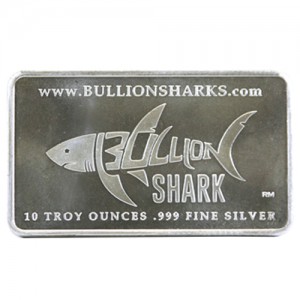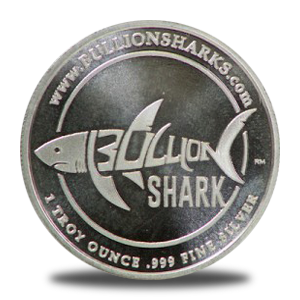What demands will silver face in 2016 and beyond – and how will this impact on it’s price?
 Bullion.Directory precious metals guest post 12 February, 2016
Bullion.Directory precious metals guest post 12 February, 2016
By Nick Adamo
President at Bullion Shark LLC
It is quite clear that demand for silver has been nothing short of impressive over the last couple years. Retail sales of silver coins have broken multiple records, industrial demand has risen, and the healthcare industry has begun to use silver more routinely in its practices as well as medical devices.
 Why has the price of silver continuously fallen despite these factors? This is a question which many investors ask and have grown frustrated in finding no solid answer.
Why has the price of silver continuously fallen despite these factors? This is a question which many investors ask and have grown frustrated in finding no solid answer.
However, the future still looks bright for the shiny metal based solely on future demand prospects alone.
Future Industrial Demand
If you are looking to invest in a precious metal that has significant industrial demand, look no further than silver. Silver is used in a variety of products produced such as photography items, electronics, automobiles, solar panels, and medical devices.
According to the Silver Institute, it is estimated that by 2018 industrial demand for silver will grow by 27%.
Even though the photography industry’s use of silver has declined in recent years, the demand for solar panels and medical devices has compensated for the loss in demand and then some. Industrialized countries as well as developing nations throughout the globe are making strides to move away from dirty forms of energy, such as oil and coal in an effort to utilize more renewable sources of energy such as the sun.
For instance, Morocco has initiated its first phase of a tremendous solar panel project that, once finished, will be the largest in the world.
A project as such will require thousands upon thousands of solar panels to be manufactured. This will result in a substantial amount of extra silver demand that wasn’t there years ago.
To put things into perspective, the Silver Institute predicts that in 2016 alone 70 million ounces of silver will be used in solar panels.
Additionally, citizens throughout the United States are beginning to install more solar panels on their homes to become less dependent on traditional sources of energy generated by large corporations.
Future Medical Demand
Silver is also becoming a staple in the medical industry. Besides its uses in medicinal products, such as colloidal silver, silver is also increasingly used in medical devices because it helps prevent infection.
With the healthcare field expected to be one of the few industries that continues to grow, logically more silver will be needed.
This will be aided in part by the fact that the United States has an aging population due to the baby boomers. To put things into perspective, Healthcare is currently one of the fastest growing fields in the world and is expected to grow by another 3.2 million jobs over the next eight years.
Future Retail Coin Demand
 The demand for silver coins has exploded in recent years. The U.S. Mint sold 47 million of their Silver Eagle bullion coins during 2015.
The demand for silver coins has exploded in recent years. The U.S. Mint sold 47 million of their Silver Eagle bullion coins during 2015.
Demand for 2016 is expected to be even greater not only for the U.S. Mint, but also for new players in the game such as the Australian Mint, who just introduced its 2016 1oz Silver Kangaroo coin to compete with the American Silver Eagle.
Retail investors are expected to increase their purchases of silver bullion if prices remain subdued and the global markets continue to show weakness.
Additionally, weak economic data out of the U.S. has caused many investors to question whether the Federal Reserve will continue to raise rates. If the economy continues to weaken, the Federal Reserve may stop in its tracks and even reverse its course by easing once again. Either situation is expected to be positive for the precious metals.
Hedge Fund & Institutional Demand
Even hedge funds are getting into the silver game. Many precious metals analysts speculate that more hedge funds will initiate or add to existing positions of silver bullion because of increasingly strong fundamentals and attractive future demand prospects.
If any major hedge fund takes a sizable position in silver, it will likely turn others to evaluate if they too should be building exposure to the metal. With the silver market relatively small in size, any sizable investment could provide support.
There is also a possibility that larger institutions will follow hedge funds into silver and even recommend the metal to clients. When major players such as Goldman and JP Morgan make recommendations many investors follow suit.
Gold-to-Silver Ratio
What is the gold-to-silver ratio?
It is the ratio between the price of gold and silver achieved by dividing the price of gold by the price of silver. This ratio is often used as an indicator for determining the better metal to invest in. Gold is at approximately $1,194.80, and the price of silver is at $15.25 an ounce. These current levels create a gold to silver ratio of over 78 to 1.
This is something that simply cannot be ignored. This ratio has almost doubled that of 2011, when the ratio was near 40 to 1. Most precious metal analysts believe that a high gold to silver ratio points towards silver as an undervalued asset.
There is a lot going on in the precious metals world, but the facts are readily available for analysis. Gold and silver prices have been on the move since the beginning of this year, and investors are anxious to see the rest of this year unfold.











 Material provided on the Bullion.Directory website is strictly for informational purposes only. The content is developed from sources believed to be providing accurate information. No information on this website is intended as investment, tax or legal advice and must not be relied upon as such. Please consult legal or tax professionals for specific information regarding your individual situation. Precious metals carry risk and investors requiring advice should always consult a properly qualified advisor. Bullion.Directory, it's staff or affiliates do not accept any liability for loss, damages, or loss of profit resulting from readers investment decisions.
Material provided on the Bullion.Directory website is strictly for informational purposes only. The content is developed from sources believed to be providing accurate information. No information on this website is intended as investment, tax or legal advice and must not be relied upon as such. Please consult legal or tax professionals for specific information regarding your individual situation. Precious metals carry risk and investors requiring advice should always consult a properly qualified advisor. Bullion.Directory, it's staff or affiliates do not accept any liability for loss, damages, or loss of profit resulting from readers investment decisions.

Leave a Reply